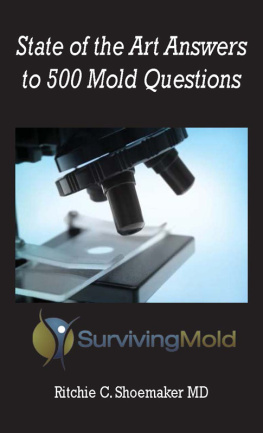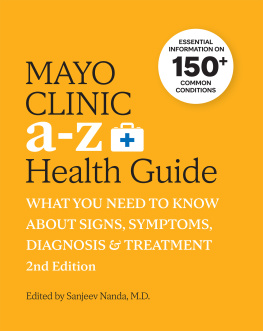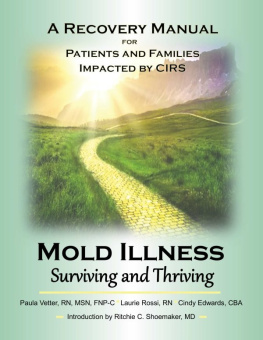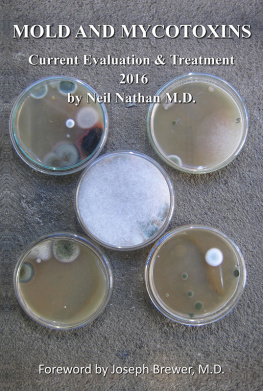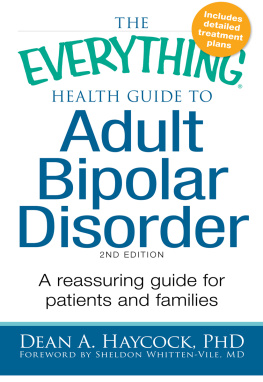Ritchie Shoemaker - State of the Art Answers to 500 Mold Questions
Here you can read online Ritchie Shoemaker - State of the Art Answers to 500 Mold Questions full text of the book (entire story) in english for free. Download pdf and epub, get meaning, cover and reviews about this ebook. year: 2014, publisher: BookBaby, genre: Romance novel. Description of the work, (preface) as well as reviews are available. Best literature library LitArk.com created for fans of good reading and offers a wide selection of genres:
Romance novel
Science fiction
Adventure
Detective
Science
History
Home and family
Prose
Art
Politics
Computer
Non-fiction
Religion
Business
Children
Humor
Choose a favorite category and find really read worthwhile books. Enjoy immersion in the world of imagination, feel the emotions of the characters or learn something new for yourself, make an fascinating discovery.
- Book:State of the Art Answers to 500 Mold Questions
- Author:
- Publisher:BookBaby
- Genre:
- Year:2014
- Rating:5 / 5
- Favourites:Add to favourites
- Your mark:
State of the Art Answers to 500 Mold Questions: summary, description and annotation
We offer to read an annotation, description, summary or preface (depends on what the author of the book "State of the Art Answers to 500 Mold Questions" wrote himself). If you haven't found the necessary information about the book — write in the comments, we will try to find it.
Sickened by moldy buildings? Need facts and answers fast? Here is your guide: State of the Art Answers for 500 Mold Questions. Thorough and reliable, 500 Answers is as current as one can find on a subject where bad information abounds. But, as far as sick people go, what I write here will need to be updated when we finally have genomic information. The world of diagnosis and treatment of chronic inflammatory response syndromes (CIRS) acquired following exposure to the interior environment of water-damaged buildings (WDB) now relies on proteomics and differential diagnosis. Call it mold illness, if you will. You need to know the latest and best information about human health effects caused by wet, moldy buildings and the importance of understanding human health effects before remediation begins. The time to share what really is going on in sickened people has been with us for nearly 20 years, yet so much just plain wrong information is out there. Our knowledge has reached new levels as therapies like use of vasoactive intestinal polypeptide (VIP) show us where we need to go to reduce reactivity and stop the systemic inflammation of CIRS-WDB.
500 Answers includes new discoveries like the information we obtain from NeuroQuant that shows that the inflammation of CIRS causes the development of a distinctive fingerprint of injury to the central nervous system found just in CIRS-WDB patients. Better still, use of NeuroQuant shows us that the ability to correct the inflammatory response will in turn show correction of localized areas of grey matter atrophy in the brain. This result of treatment is unheard of in the world of brain injury. If you want to confirm that your executive cognitive functioning is due to exposure to WDB, do a NeuroQuant as part of the full work up.
If you simply want to know what to do to obtain a diagnosis that is accurate and begin therapies that work, 500 Answers is a must read. If you need solid information on how to go about testing your home, school and workplace to see if those buildings could be making you sick, 500 Answers is for you as well.
If you dont have any experience with human health effects cause by wet buildings, and you are understandably overwhelmed by the fuzzy science on the Internet, 500 Answers is your portal to a sharp vision of what is wrong and what needs to be done.
500 Answers has a complete Table of Contents, a roster of the many acronyms used and an index that will help you find out quickly what you want to know. The information in 500 Answers is correct but when we add genomics, the jargon terms and new information is going to require a steep learning curve. We welcome you to learn what you need to know now. We will help you with the new understanding too when the time comes.
Ritchie Shoemaker: author's other books
Who wrote State of the Art Answers to 500 Mold Questions? Find out the surname, the name of the author of the book and a list of all author's works by series.

